Puzzle corner
Puzzle corner is currently on hiatus.
To view back issues of Puzzle Corner, visit the Puzzle Corner website at cs.nyu.edu/~gottlieb/tr.
Puzzle corner is currently on hiatus.
To view back issues of Puzzle Corner, visit the Puzzle Corner website at cs.nyu.edu/~gottlieb/tr.
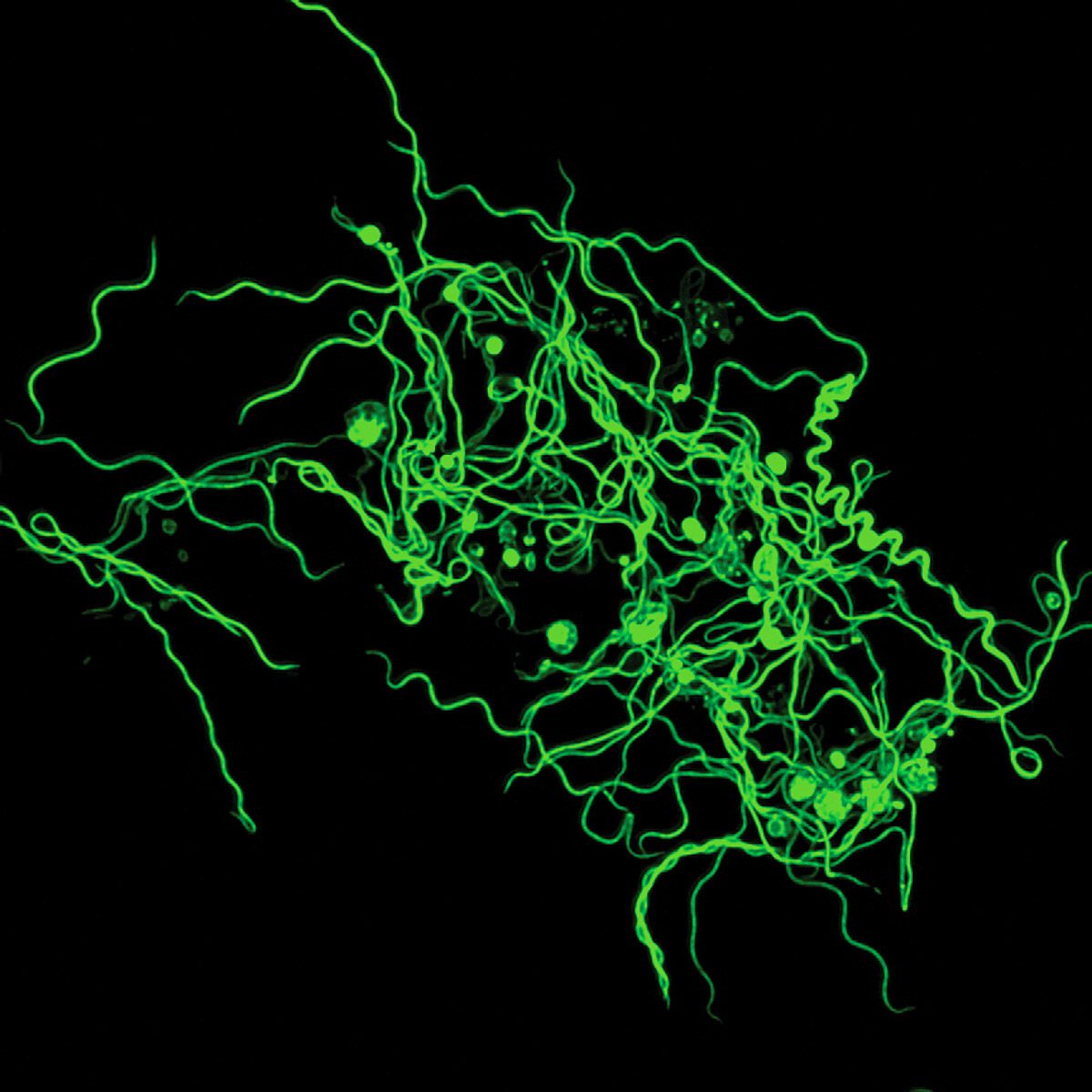
MIT immunoengineer Michal “Mikki” Tal remembers the exact moment she had an insight that would change the trajectory of her research, getting her hooked on studying a long-neglected disease that leaves millions of Americans suffering without treatment.
It was 2017, and she was a Stanford postdoc exploring connections between her immune regulation research and immuno-oncology, which harnesses the body’s immune system to combat cancer. Her work focused on how healthy cells broadcast “Don’t eat me” messages while cells that are cancerous or infected with a pathogen send self-sacrificing “Eat me” messages. Immune cells, in turn, receive these missives in pocket-like receptors. The receptor that receives the healthy cells’ signal, Tal read as she was poring over the literature that day, is the third most diverse protein in the human population, meaning that it varies a lot from one person to the next. It was a fact that struck her as “very odd.”
Tal, who has been obsessed with infectious disease since losing an uncle to HIV/AIDS and a cousin to meningococcal meningitis, wondered what this striking diversity could reveal about our immune response to infection. According to one hypothesis, the wide array of these receptors is the result of an evolutionary arms race between disease-causing microbes and the immune system. Think of the receptor as a lock, and the “Nothing to see here” message as a key. Pathogens might evolve to produce their own chemical mimics of this key, effectively hiding from the immune system in plain sight. In response, the human population has developed a wide range of locks to frustrate any given impostor key.
Wanting to test this hypothesis, Tal found herself walking the halls of Stanford, asking colleagues, “Who’s got a cool bug?” Someone gave her Borrelia burgdorferi, the bacterium that causes Lyme disease. Previous research from Tal’s collaborator Jenifer Coburn, a microbiologist now at the Medical College of Wisconsin, had established that Lyme bacteria sport a special protein crucial for establishing a lasting infection. Knock this protein out, and the immune system swiftly overwhelms the bugs. The big question, however, was what made this protein so essential. So Tal used what’s known as a high-affinity probe as bait—and caught the Borrelia’s mimic of our “Don’t eat me” signal binding to it. In other words, she confirmed that the bacteria’s sneakyprotein was, as predicted, a close match for a healthy cell’s signal.
Until then, Tal says, she had never given Lyme disease much thought. But the more she learned, the more disturbed she grew. Even after timely antibiotic treatment, roughly 10% of all Lyme patients go on to develop chronic symptoms that can include crushing pain, debilitating fatigue, and cognitive changes that make basic tasks a struggle.

Perhaps even more alarming than the disease has been the medical community’s response to it. “I realized that there’s this public health debacle around Lyme, and it’s, for lack of a better word, obscene,” Tal says. Chronic Lyme patients skew female, and for decades, clinicians have dismissed their symptoms as signs of mental illness. The medical establishment has “done nothing but call them crazy,” Tal says, “instead of admitting that they just don’t understand what’s going on.”
Today, there is no objective way to diagnose chronic Lyme, and no medically accepted therapy. For some patients, lengthy treatments with high doses of antibiotics can ease symptoms, but these come with their own serious risks. (They can, for example, damage the microbiome, leading to significant negative effects on health.) And because the antibiotic used currently only prevents bacteria from replicating, Tal notes, it’s up to the immune system to actually kill off the invaders. If immune cells can’t tell friend from foe, the utility of antibiotics may be limited.
Chronic Lyme patients skew female, and for decades, the medical establishment has “done nothing but call them crazy,” Tal says, “instead of admitting that they just don’t understand what’s going on.”
For Tal, these revelations were electrifying. She dove into the immunology of Lyme disease, focusing in particular on sex differences. In one mouse experiment, she discovered that Lyme bacteria “completely disfigured” the uterus. Yet after delving through decades of Lyme research, she could find only one other study that even documented uterine infection.
This shortfall mirrors larger problems in medical research. “We’ve let men dictate the direction of research funding for so long,” Tal says. Traditionally, studies focused on male subjects, and a 1977 FDA policy barred women from participating in most clinical trials in the US in the wake of birth defects caused by thalidomide. It wasn’t until 1993 that federal law required studies to include women and minorities. This, coupled with other sex- and gender-based medical biases, means that many female-dominated diseases remain under-researched. “So much of this research is being done on males, male mice—male, male, male,” Tal says. “And I’m like, no.”
Tal suspects that the sex disparities seen in chronic Lyme and other pathogen-triggered chronic diseases might come down to the fact that men mount a more robust response to acute infection. This no-holds-barred approach is risky—“Your immune system has the power to kill you,” she notes—but it may mean that men, on average, can kill off more viruses or bacteria in the critical first week of infection. After that window closes, the immune system largely settles back down, Tal says. Pathogens that escaped the initial blitz could take up long-term residence in the body, potentially causing persistent symptoms. And women have a higher chance of chronic illness.
In 2020, the pandemic slammed the brakes on most in-person research at Stanford, including Tal’s Lyme studies, and she switched to investigating the salivary immune response to covid. As soon as vaccines were in clinical trials, she shifted to studying the mucosal response to covid vaccines. Meanwhile, reports began emerging that many covid patients never recovered from their acute infections, continuing to face an array of bewildering symptoms ranging from shortness of breath to crushing fatigue and cognitive deficits.
For Tal, the similarities with Lyme disease were uncanny. “Long covid looks exactly, and I mean exactly, like chronic Lyme,” she says. “One is caused by bacteria, and one is caused by a virus. And I started to ask myself this question: Does it matter which road you took to Rome? Or does it only matter that you’re in Rome?”
This is one of the most fundamental questions facing researchers who study infection-mediated chronic illness. One school of thought—backed by increasing evidence in the case of long covid—holds that stubbornly persistent pathogens are driving symptoms in at least a portion of the patient population. According to another hypothesis, the immune system has successfully vanquished the infection but remains stuck in a faulty state. Determining the underlying cause of these conditions will be essential to developing the most effective treatments, whether in the form of immune-assisting drugs such as antibiotics and antivirals or immune-calming drugs such as biologic therapies and steroids.
“Mikki is really a leader about thinking about sex differences in immunology,” says Linda Griffith, director of MIT’s Center for Gynepathology Research (CGR) and the School of Engineering Professor of Teaching Innovation of Biological and Mechanical Engineering. “She is extremely fearless. She’s not going to go along with the crowd because she wants to be liked. And she’s not afraid of proposing something that may be a little out there.”
In 2021, Griffith invited Tal to join CGR as associate scientific director and a principal research scientist in the Department of Biological Engineering to continue her studies of sex-specific responses to infection. When Tal accepted, Griffith says, “it was like a bomb. Like, okay, let’s make this happen.” Tal has since proved to be a compelling ambassador for the center’s work. (In December, for example, her tweet calling attention to the work of CGR went viral when she pointed out that studying the menstrual cycle could have useful implications for wound healing.)



In her first two years at MIT, Tal and her research group put together MIT MAESTRO, a 300-participant study looking for objective biomarkers for chronic Lyme and long covid. (Tal’s team—some of whom have personal experience with these diseases—is orchestrating the work of many labs and companies with different kinds of expertise; MAESTRO is a creative acronym for “mucosal and systemic signatures triggered by responses to infectious organisms.”) Designing and setting up the study was “an incredible feat,” she says. “I could have never done this without my team.”
Treatment of long covid, like chronic Lyme, has been hampered by the fact that standard medical tests rarely show evidence of anything amiss. Through the study—evenly split between healthy controls and patients with acute Lyme, chronic Lyme, suspected Lyme, and long covid—Tal and her research group hope to change this.
As someone who’s had long covid since February 2021, I was eager to take part in the MAESTRO study when I learned about it through an online forum. I became the first study participant to undergo MAESTRO’s unconventional battery of tests, which is how I found myself last March in a dark, quiet room at MIT’s Center for Clinical and Translational Research (CCTR) in Building E-25, zapping aliens with my eyes.
“Long covid looks exactly, and I mean exactly, like chronic Lyme.”
Michal “Mikki” Tal, MIT immunoengineer
As I stared at the computer, waiting for images of aliens to appear on different parts of the screen, the computer also stared back at me, via cameras that followed the tiniest movements of my eyes. While I tracked slow-moving dots, or raced to identify faint gray lines on flashing gray circles, a program watched for abnormalities in the way my eyes moved and focused. After hearing from college-educated patients that they had trouble reading, Tal and her team included these vision-tracking tests to help distinguish between a vision issue and a neurocognitive issue.
Working my way through MAESTRO’s litany of tests felt like a trip to a high-tech carnival midway. There was a gadget to measure grip strength, another to test the electrical properties of skin, and a next-gen EEG cap that looked like a bike helmet. Seated in front of a computer screen, I watched as the seismograph-like lines of my brain activity zoomed all over whenever I blinked or spoke. Tal says they’re using EEG along with the eye-tracking tests and a video-game-like platform called BrainCheck to try to characterize and quantify the concept of brain fog.
MAESTRO is also collecting samples of participants’ blood, saliva, sweat, urine, and feces, along with swabs from the throat and vagina. Tal and her research group (a team that currently includes a research scientist, a research specialist, four technical associates, a med school researcher, and several UROP students) are analyzing the samples for genetic material from a vast array of microorganisms, as well as for a range of human and microbial proteins. The tests may show evidence of persistent infections or alterations to the body’s microbiome. With thousands of data points for each subject, the team has enlisted an AI platform to help make sense of the mountain of data they collect. AI will also let them compare their test results with other research involving many thousands of people to help them tease out which features are truly unique in those with long covid and chronic Lyme disease. That’s critical, Tal says, since inflammatory diseases inherently share many features.
By including acute Lyme patients, Tal hopes, MAESTRO will get her closer to another one of her driving goals: predicting who will and will not fully recover after a Lyme-laden tick bite.
In fact, Tal has already identified a compelling lead: the levels of multiple types of antibodies, including IgG and IgE, at the start of infection. She characterizes the different subtypes of IgG as the immune system’s SWAT team—a small, targeted attack that leaves the surrounding neighborhood intact. IgE, in contrast, is like an air strike. It wipes out pathogens but also does serious damage to the body. “IgE is meant to remodel tissue,” Tal says. “Remodeling tissue is expensive and painful, and there’s a lot that can go wrong when you do it that way.”
Today, Lyme tests only look at IgG and another antibody type, IgM, but not IgE. “We’re ignoring the people who have the air-strike reaction,” Tal says. Tracking the levels of IgE, IgG, and other antibodies may hold the key to predicting which Lyme infections will turn into a chronic illness. In July, the National Institutes of Health awarded Tal $2 million to further test this immunological crystal ball. She and her team expect to publish their findings as early as 2025.
The NIH grant, one of several for chronic-Lyme research, signals a shift in the way the medical establishment views these patients. The explosive appearance of millions of covid long-haulers, many of them doctors and nurses, has upended entrenched beliefs about infection-triggered chronic diseases—namely, that they are psychosomatic or an excuse to get out of work. Tal recalls a recent conference where the keynote speaker, acknowledging the eye-opening fact of long covid, apologized for what he had written in the past about chronic Lyme.
As covid infections continue to surge, and as climate change pushes ticks into new habitats, finding out the causes of these conditions and coming up with cures will become ever more essential. Without treatments, many patients are facing a lifetime of disabling symptoms. Tal hopes to find the funding to expand MAESTRO to include more patients over 65, since both epidemiology data and their complementary research with mice suggest that symptoms worsen with age. And the impact could spread beyond long covid and Lyme patients as well. “If we do nothing, we’re going to crush our health systems,” Tal says, “because they’re not equipped for this level of chronic illness.”
As intimidating as these problems are, Tal remains optimistic. “I’m convinced this is a solvable problem,” she says. “I’ve thrown everything I can at trying to find it. And I really hope that we do.”

For more than 20 million years, beavers have been, well, busy. They’ve been felling trees for that long, and building dams and lodges for at least the last few million years, earning a well-deserved reputation for industriousness and ingenuity. It seemed only fitting, then, that MIT saw fit to claim the beaver as its mascot in 1914. By 1921, The Tech reported that gray beaver hats had become “the distinguishing mark of an Institute man” at college gatherings. The toothy, mainly nocturnal rodent has appeared on every rendition of the MIT class ring—now lovingly called the brass rat—since it was introduced in 1929.
Read on to learn more about Castor canadensis, the remarkable four-legged engineers.
The North American beaver is the largest rodent in the Northern Hemisphere, typically weighing in at 35 to 65 pounds. (Only the South American capybara weighs more.) They make their homes in ponds, rivers, streams, and wetlands throughout most of North America.



They are one of the few species in the world that typically mate for life. Their offspring, known as kits, can swim within days of birth, but their childhoods are among the longest in the animal world. They generally live for two years with their parents, which both take part in raising them. It takes that long for the parents and older siblings to show them, by example, how to build dams and lodges, how to plan and dig channels, and how to select food, harvest it, and store it for the winter. It’s kind of like going to engineering school. Beavers then move on to form their own families, often building their own colonies. They typically live to age 10 or 12 in the wild.
Beavers are vegetarians but with a twist. They favor the inner bark of certain tree species, including willow, poplar, aspen, birch, and maple, feasting on the cambium, the soft, sap-laden layer immediately under the outer bark. Conifers, however, are not considered a delicacy. Beavers eat them only rarely, and tend to fell them mainly for dam building and to encourage growth of things they’d rather eat. In summer they consume readily available grasses, leaves, herbs, fruit, and aquatic plants. To prepare for winter in cold climates, they create an underwater cache of sticks and logs they’ve gnawed from trees they’ve felled. First they assemble a floating raft of not-so-delicious branches above a deep part of their pond; then they stash their preferred branches beneath them. The pile absorbs water and sinks to the bottom, with the less-favored branches often freezing in the ice at the surface and acting as a protective covering that secures the more-desirable lower branches, which remain accessible below the ice. The cold water preserves the nutritional value of the branches.
While humans can’t digest cellulose, beavers have a small sac between the large and small intestines containing microorganisms that ferment this material, helping them digest up to 30% of it.
Forget mink, ermine, and sable. Of all fur-bearing animals, beavers have the coat that is rated the warmest. So it’s no surprise that European demand for hats made of warm, water-resistant, and durable beaver felt led to lucrative trapping and fur-trading ventures in North America. In the 17th and 18th centuries, as many as 200,000 North American beaver pelts were exported annually to Europe. (Fierce competition to monopolize the fur trade led to a series of so-called Beaver Wars between 1628 and the Treaty of Montreal in 1701: the Iroquois Confederation, backed by the Dutch and British, battled the Huron Confederation, backed by France.) These enterprises gave rise to many European settlements and trading centers in North America—and nearly wiped out the continent’s beaver population.
Beavers evolved to have such cozy pelts for good reason: they don’t hibernate, so they need to stay warm and dry as they venture from their lodges into frigid waters to access their winter food cache. Maintaining such a pelt requires diligent grooming to remove debris and insects and prevent matting. A beaver rakes the fur of its face, head, and belly with its fingernails, and gets at some difficult-to-reach spots with its hind feet. The innermost toenails on those feet open and close over the toe, like a bird’s beak, and function as coarse-toothed combs. The second hind toe has a serrated horny growth between the true nail and the toe, which serves as a fine-toothed comb. Beavers waterproof their skin and coats with oil produced by a pair of glands located beneath their tails and use these custom toenail combs to work it into their fur.
Beavers also engage in social grooming, usually inside their lodge. A beaver’s body is so round and its limbs so short that it must rely on family members to groom its back. Mutual grooming also reinforces family bonds.
In the animal kingdom, beavers, humans, bears, and the occasional ape are among the few mammals that can hold their bodies upright and walk for any distance. Like humans, beavers can carry things at the same time, and often walk up from a pond onto their dam holding a rock, branch, or clump of muddy clay with their front paws. Thanks to an opposing digit (the equivalent of the human pinky finger), they can grasp items with their front paws, whose long claws work well for digging. They also use their “hands” to carry their kits and to hold and rotate food as they gnaw it, similar to how humans eat corn on the cob.
Beavers are excellent swimmers thanks to strong rear legs with wide, webbed feet. They also benefit from built-in swim goggles—an extra set of transparent eyelids called nictitating membranes that let them see well underwater and protect their eyes from any dangerous microorganisms in ponds and lakes. Beavers’ ears and nostrils can seal out water, and their large lungs let them stay underwater as long as 15 minutes.
The shape of a beaver’s tail runs in the family: some are short and wide, others long and narrow. The tail offers an outstanding example of multifunctional engineering, allowing beavers to maintain stability, steer, communicate, store food, and more.
When a beaver walks upright, carrying a heavy load like a rock or tree limb, its tail slides behind on the ground, helping the animal maintain its balance. In the water, the tail serves as a rudder and helps a swimming beaver maneuver past obstructions.
Since sound travels well underwater, the beaver can signal an alarm to the colony by beating its tail on the water surface. And research suggests that beavers’ furless tails help regulate body temperature: keeping them in cool water on warm days allows the animals to avoid overheating.
During the fall, the beaver stores a large amount of fat in its tail that it will use to supplement its winter rations. Woodsmen and frontiersmen living off the lean meat of wild game treasured cooked beaver tail as a source of fat in their own diet.
In addition to having multifunctional tails, beavers come equipped with constantly replenished and self-sharpening cutting tools. Their trademark front incisors are rusty orange thanks to an iron-rich enamel coating that helps them withstand mechanical stress and makes them resistant to acid. And these teeth never stop growing. Beavers must regularly gnaw bark to keep them sharp and to avoid starvation. If they don’t keep their incisors short enough to close their mouths, they can’t grind food with their back molars.
Beavers famously put these built-in tools to good use building dams to turn streams into ponds and swampy wetlands conducive to their way of life. (Like humans, they are on a very short list of creatures that alter their environment to suit their purposes.) The average beaver dam has a height differential slightly under five feet, but at least one dam has been found with a 16-foot difference between the water height behind the dam and in front of it.



After humans and dogs, beavers have the most parachute jumps on record. In 1948, 76 beavers parachuted into a remote area of Idaho as part of a relocation program. Using surplus World War II parachutes, they descended in boxes that automatically opened upon landing.
When beavers dam rivers and streams, they tend to choose relatively slow-flowing waterways and build straight across. Like human engineers, they build curved dams on more swiftly flowing streams to better withstand the pressure of the rushing water. Beavers place about 50% to 70% of the wood in their dams and let flowing water help with the rest: the remaining wood (mostly smaller sticks) gets trapped when it floats downstream. Although less visible, river rocks the animals carry one at a time typically make up a major portion of the dam. Beavers routinely inspect and maintain their dams, so they rarely break.
The world’s longest known beaver dam is visible from space and was discovered by a researcher viewing satellite images of a remote part of Wood Buffalo National Park in Alberta, Canada. Measuring 2,788 feet, it’s more than twice as long as the Hoover Dam. While human-built dams of that scale are constructed with massive, pollution-spewing earth-moving equipment, the Wood Buffalo colony used just their teeth and powerful limbs—and the only pollution involved was emitted by the occasional “gassy” beaver. (Incidentally, while beavers do pass gas, they are incapable of burping.)
Beavers—which cut an average of 216 trees a year and can topple a young willow in six minutes—go to all this dam-building trouble to slow the flow of water so they can create ponds in which to situate their lodges. The pond must be deep enough to keep water from freezing all the way to the bottom, allowing them to swim to reach food sources—and get in and out of their lodges—even in winter.
To construct a lodge in the middle of their pond, beavers amass sticks, rocks, and mud to create a platform about 10 centimeters above the water level, topping that with a mound of sticks, bark, and more mud. Then they dig tunnels from the mud below into the pile of sticks, and gnaw out a large, dry room above the waterline to create areas for feeding and resting. Often, they’ll have a lower room for eating, topped by a drier room for hanging out and sleeping.
Sometimes beavers dig into the bank of a waterway to create a den, which can involve piling sticks on top and gnawing out a space from the inside. But siting a lodge so it’s surrounded by a moat of deeper water helps fend off large predators like bears, which have difficulty breaking in if their back feet don’t have purchase on solid ground. Whether in a bank or mid-pond, lodges are accessible only from underwater tunnels, which offers protection from land-based predators. Typically, they have at least two underwater entrances to ensure an escape route should aquatic predators like otters invade.
Before winter sets in, beavers insulate their lodge walls—which can be a foot or two thick—by using their front paws to coat them with mud, which freezes into a hard, plaster-like shell. A hole at the top of the domed structure provides ventilation.
Beavers appear to be able to make the connection between flooding inside their lodge and the height of water behind their dam. If the water gets too high, they will partially dismantle their dam to let water out and lower the level in the pond it contains.
Beavers also dig canals and channels, which can be several hundred meters long. Since most of their predators are at a disadvantage in water, they use canals to travel safely to faraway food sources and logging sites as well as to float logs back to their pond for eating and building.
As efficient creators and stewards of wetlands, beavers provide a hospitable ecosystem for dozens of other creatures, from insects, frogs, and turtles to owls, otters, great blue herons, and even moose and deer. What’s more, by harvesting undergrowth for their dams and creating ponds and bogs that raise the moisture content of the soil, beavers lessen the likelihood that forest fires will spread. As forest fires devastated Oregon in 2021, beaver wetlands remained green and lush, acting as natural firebreaks. On aerial images of the charred landscape, the beaver’s habitat stands out, a wide and verdant ribbon running through the blackened trees.
While not all property owners who live near beaver habitats appreciate the animals’ tree removal services, the pro-beaver movement seems to be getting more organized. In November 2023, some 300 beaver restoration advocates from North America and Europe gathered in the Beaver State (Oregon) for the annual State of the Beaver conference. “Seventy-five percent of the artificial wetland restoration projects done in America over the past 30 years have failed,” conference cofounder Stanley Petrowski told the Daily Yonder. “But when beavers do it, they do it perfectly.”
BeaverCon, held near Baltimore in June of 2022, and the Midwest Beaver Summit, held in Chicago and online in September 2023, attracted similar crowds of humans interested in promoting beaver welfare.
It is, in fact, possible to find ways to allow beavers to continue creating their watery habitats in ways that minimize damage to human infrastructure. For example, devices such as the Beaver Deceiver can be installed to prevent beavers from damming culverts, which often leads to flooding of roads. Skip Lisle, founder of Beaver Deceivers International of Grafton, Vermont, first developed the device in the 1990s to beaver-proof the Penobscot Nation’s 130 miles of roads in Maine. “In all likelihood, they are the first large landowner to completely beaver-proof their property nonlethally,” he says.
At the base of their tail, all beavers have two castor sacs that store castoreum, a complex, granular substance with a strong and long-lasting musky smell. It is made up of at least 24 different compounds, primarily derived from the barks of the various trees in the beaver’s diet. Beavers deposit castoreum atop foot-high mounds of mud, sticks, and grass to mark the edges of their territory.
Humans have long valued castoreum. About 400 BCE, Hippocrates, a chronicler of natural cures, wrote of its wonderful medical properties. Around 77 CE, the Roman naturalist Pliny listed castoreum as a cure for headaches, constipation, and epilepsy. In the Middle Ages the list of maladies castoreum was said to cure expanded to include dysentery, worms, fleas, pleurisy, gout, rheumatism, insomnia, hysteria, memory loss, and liver problems.
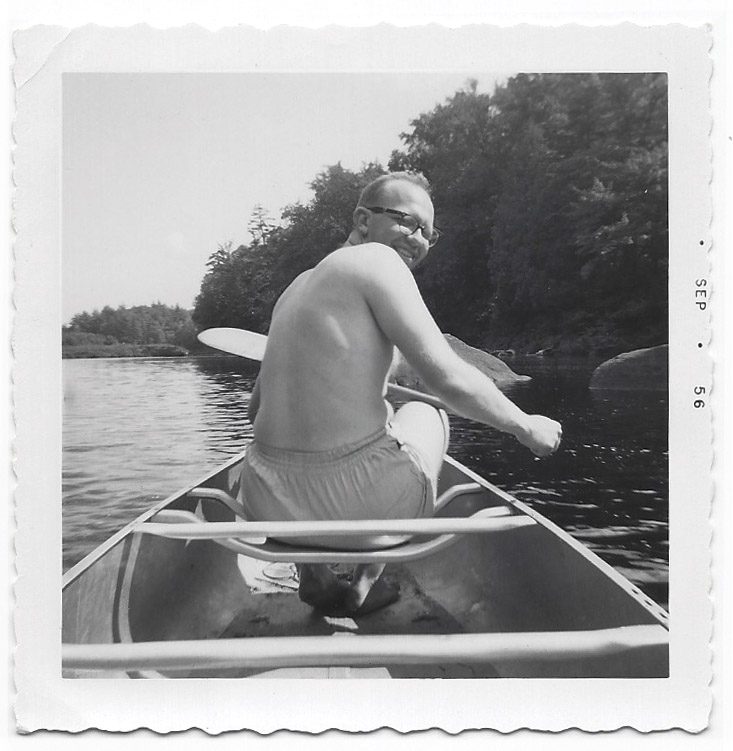


As it turns out, quite a few of the tree barks that beavers prefer contain compounds with known medicinal benefits. Phenols, for example, are often anti-inflammatory and antiseptic and can have antiviral properties. They include salicylic acid (a precursor to aspirin), which can be found in the bark of willow, poplar, and alder trees—all beaver favorites. The beaver’s system functions as a natural pharmacy, extracting these compounds (among others) and secreting them in the form of castoreum.
Humans have also used castoreum for several nonmedical applications, such as in high-end “leather note” perfumes including Shalimar, Givenchy III, and Chanel’s Antaeus. It is an ingredient in some bourbons and vodkas and has been used in Sweden to flavor “Bäverhojt” (literally, beaver shout) schnapps.
Today, most castoreum is harvested in a sterile environment by anesthetizing beavers and expressing the castor sacs near their tails. As a food additive, castoreum extract is “generally recognized as safe,” according to the FDA. But at close to $100 per pound, it’s used sparingly. The total annual US consumption of dried castoreum is around 300 pounds.
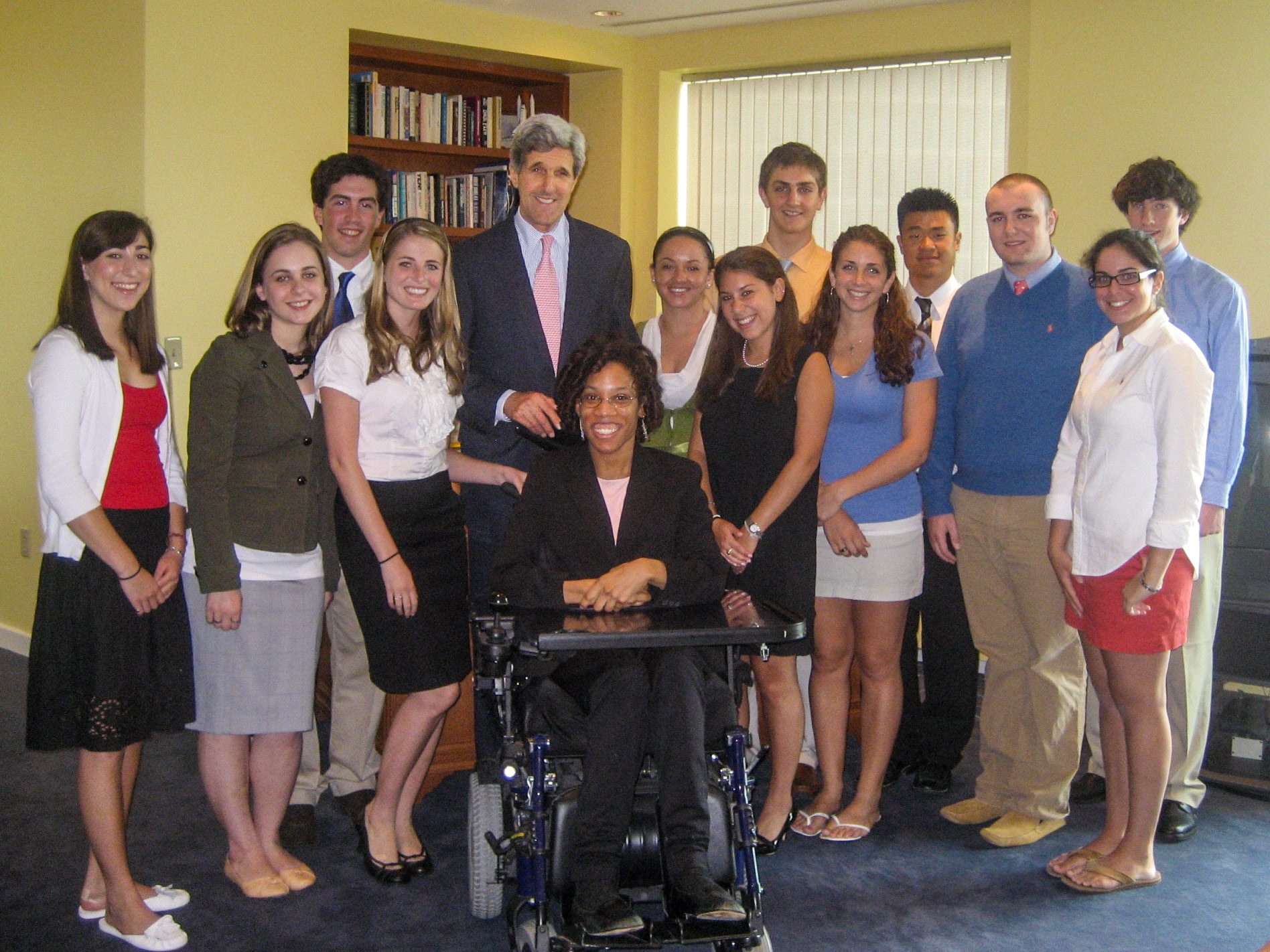
Allison V. Thompkins, PhD ’11, used to spend her days steeped in statistical analysis, digging into economic data to understand how the world works. These days, you’re more likely to find her writing about how to modify prayer or meditation practices to make them more accessible for people with disabilities.
From the outside, the shift from economic policy research to a career writing and teaching about spirituality might seem like a substantial one. But for Thompkins, the instincts behind both pursuits flow from the same place.
“From my perspective, the main connecting thread of economics and spirituality is their power to improve the world,” she says.
That drive to transform the world around her into a more equitable and just place has been with Thompkins for as long as she can remember. As a kid living with cerebral palsy, she was involved in disability advocacy from a young age. At age six, she was interviewed by PBS about her love for Martin Luther King Jr. as an example of someone who fought for people’s rights, and as a nine-year-old she wrote an essay about the need for disability representation in radio programming.
As an adult, that same drive led her to MIT to study under labor economists David Autor and Joshua Angrist, both of whom are Ford professors of economics. She was one of the first people with cerebral palsy and the first power-chair user to earn a PhD from the Institute. While working on her dissertation, which focused on disability policy, she also began consulting for the World Bank. Upon graduating, she found work in economic policy at the research firm Mathematica.
When her health required that she take a step back from full-time work, she decided to share her growing spiritual practice, first on her blog and then in the form of a book, Spirituality Is for Every Body: 8 Accessible, Inclusive Ways to Connect with the Divine When Living with Disability, which was published in February.
“People are most likely more accustomed to thinking about the role of spirituality or the Divine when speaking about professions such as singing or painting or writing poetry, rather than professions that are data driven … [But] for me, the goal of practicing economics was always to improve the world,” she says. The goal of making life better for others—not just oneself—is, in her view, also “the most important reason to engage in spirituality.”






Thompkins has always looked for meaningful patterns where others might see only randomness and chance. As an economist, she takes unruly piles of numbers and transforms them into useful data that can inform things like microlending programs for people living with disabilities in India. As a spiritual seeker, she’s adopted the perspective that everything happens for a reason.
All of this has imbued her life with a deep sense of purpose, whether she’s working on disability policy or writing about meditation.
“Love and beauty—I know you don’t always hear those [words] when discussing economics,” she says with a smile on a Zoom call. “But whatever I do, I seek to allow the love and the light that I have to shine through whatever thing I choose.”
Thompkins’s experiences as a youth advocate set her up to dream big about what she might accomplish on behalf of the disabled community. Her hope as a teenager had been to go to law school and become a disability rights attorney—that is, until she surprised herself by falling in love with an economics course in high school. She majored in mathematical economics at Scripps College. And by the time she arrived on MIT’s campus for grad school, she had become enthusiastic about the possibility of using economics as a tool for disability justice.
Angrist, a Nobel Prize winner who served as one of Thompkins’s thesis advisors, wrote one of the early papers analyzing the Americans with Disabilities Act and concluded that it had in many ways been counterproductive. He and his coauthor, fellow MIT economics professor Daron Acemoglu, found that the ADA increased costs for employers and wound up having a negative effect on employment of disabled workers. Thompkins built on their research, writing the first two papers analyzing the long-term impact of the ADA. Both have been cited often.
She also wrote a report on disability policy in India for the World Bank and then conducted more sophisticated econometric analysis, using the same World Bank data, of an Indian program designed to give assistance to disabled workers and working-age disabled people. That research became a chapter of her PhD thesis and was later published in Applied Economics and Finance. Angrist, who remembers Thompkins as a “hardworking and tenacious student,” says that “Allison’s paper at the time was one of the few to look at labor market effects of disability policy in that part of the world.”
“Even to hold my neck in one position is kind of like mountain climbing would be for some other people.”
The Indian program was unique at the time because “mainstream microlending programs systematically excluded people with disabilities from receiving loans,” Thompkins says. After digging into the data, she realized that many of the disabled people who received microloans were not on schedule to repay them on time because they used the loans not to expand a business but to go to secondary school, which she calls “a luxury that many disabled people in rural India do not get.” But her analysis concluded that researchers needed longer-term data to determine the loans’ ultimate impact on these participants’ economic outcomes. In other words, it wasn’t fair to assume that just because disabled people weren’t using the microloans in the exact way that the lenders had expected, the investment was wasted.
Thompkins earned a reputation at MIT for her warmth and excitement about her work. “She’s always very joyful and was really passionate about what she was doing, and just exuded positivity and enthusiasm,” says Autor, who also served as her thesis advisor. Kathleen Monagle, associate dean and director of disability and access services, adds that she’s also generous with her time and energy. Thompkins helped author a brochure for MIT on best practices for communicating with people with a range of disabilities—which Monagle’s office still uses—and has served as a mentor to numerous students who have come through the office over the years.
After earning her PhD, Thompkins became a research economist at Mathematica, where she conducted research on employment among people with disabilities, among other topics. Now, though she no longer works full time as an economist, she still takes on consulting gigs occasionally.
Though stepping back from work for health reasons wasn’t what she would’ve planned for herself, the shift cleared the way for Thompkins to begin writing more about something else that had become important to her: the pursuit of a spiritual life that could sustain her in the face of challenging circumstances. She grew up going to church with her family, started meditating at age eight, and began modifying her meditation practice to fit her abilities in her teens. As an adult, she has continued to expand her understanding of spirituality through extensive reading. Yet her personal experiences, as well as her relationships with others in the disability community, had long made her aware of the barriers to participating in spiritual life for many people with disabilities. While practices like reading a book or praying quietly might seem almost effortless to some, they can be incredibly challenging for others, she notes.
“Even to hold my neck in one position is kind of like mountain climbing would be for some other people,” she says. (In her book, she notes that “researchers have estimated that someone with cerebral palsy uses three to five times more energy than someone without a disability.”)
Having modified spiritual practices to fit her own needs and physical abilities, Thompkins is well suited to guide other people with disabilities on that journey, and to equip spiritual leaders of all abilities looking to include them in their spiritual communities.
That’s one of the main thrusts of her book. In each chapter, she shares anecdotes about her life, from her experience getting snubbed for a role in her school play and later landing a TV acting role to the arduous but ultimately rewarding process of hunting for a power-chair-accessible apartment. At the end of each chapter, she shares spiritual practices like prayer, meditation, and service for readers to try out themselves. But her book differs from other explorations of spirituality in that she includes extensive modification guidelines based on different physical abilities.
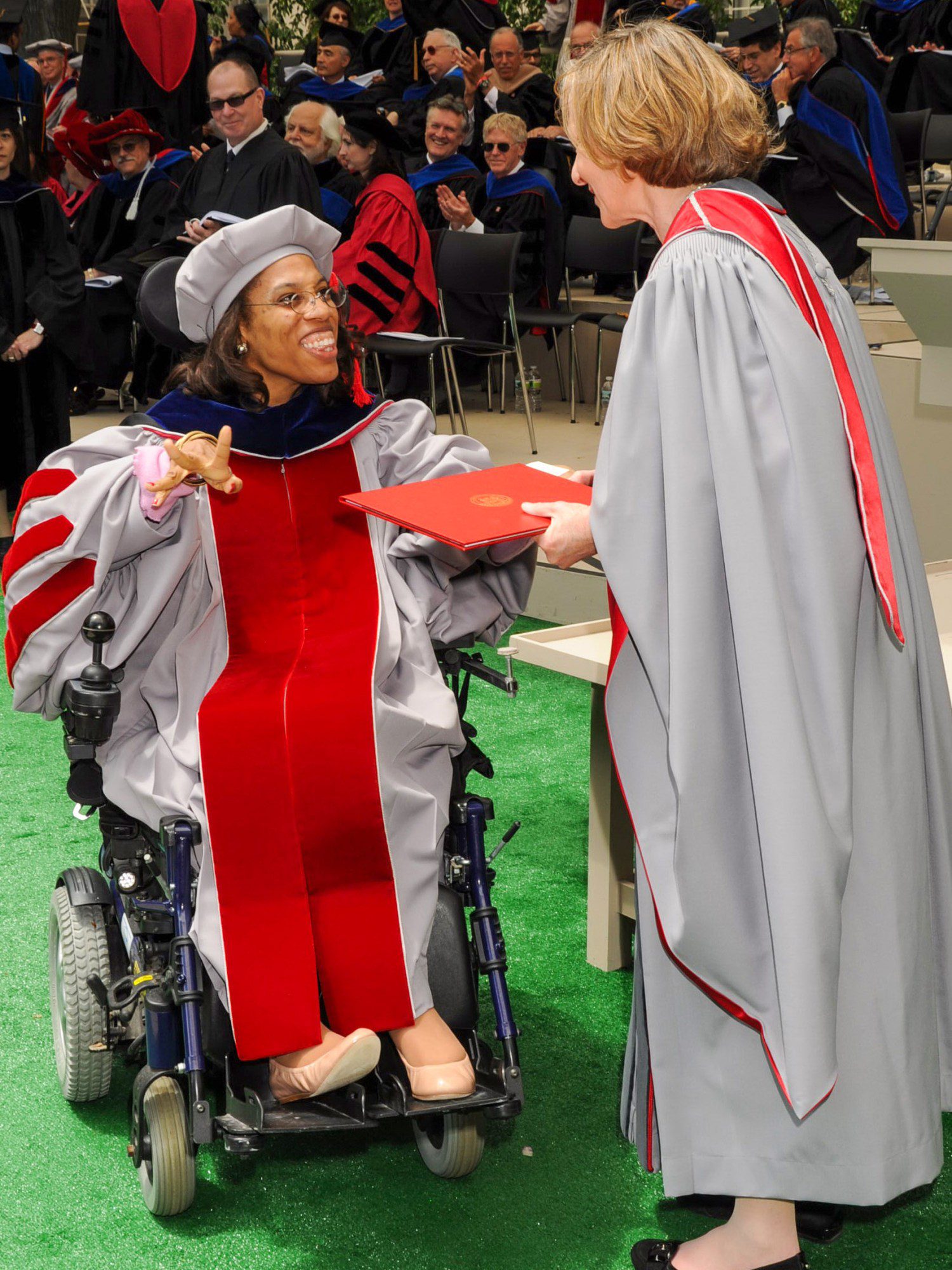


“So many within the disability community are curious about, and want to be involved in, spirituality,” she says, “but find that much of the rhetoric and discourse in spiritual circles either bypasses the disability experience altogether or only speaks about disability in the familiar tropes and platitudes found in larger society. My hope is that my book helps to remedy this by providing a foundation and framework for how to openly, honestly, and astutely discuss disability through a spiritual lens while providing full access to spiritual practices that can sometimes exclude disabled people.”
Thompkins kept her spiritual life to herself when she was a student, but as she faced new physical challenges, she found herself needing to ask for more help when pursuing the spiritual practices that are important to her. This in turn led to a new openness in talking about how central spirituality is to her life. “My family, caregivers, and friends who help me engage in spirituality are curious about what I’m doing and often ask me questions. Thus, I found that as my physical abilities have changed, I’ve become more of a spiritual teacher in my day-to-day life,” she says.
The role of teacher isn’t one she sought out. But as someone who has a deep sense that the universe is more filled with purpose than with coincidence, she’s inclined to accept the role that’s been placed in front of her.
“Both spirituality and economics enable me to achieve my ultimate goal of doing my part to transform the world for the better,” she says.
As our alumni and friends know better than anyone, the intellectual excellence and bold ingenuity of the people of MIT are the Institute’s greatest strength. While IAP supplied its welcome respite, the first part of the year also offered inspiring reminders of MIT’s ability to make a powerful, positive difference in the world. Here are just two examples.
In January, we engaged the MIT community with a day of fascinating panel discussions to launch the MIT Shaping the Future of Work Initiative. Participants from government, industry, and academia explored questions like What kind of work do we want in the future? and How do we shape technology for social good?
Many universities are taking on climate change by launching a new school or designating a new building. By the time you read this letter, we will have announced a different approach with the Climate Project at MIT, an ambitious new effort to focus the strength of our community on achieving a set of critical missions in the fight to cope with this global threat. This was the central priority I discussed in my inaugural remarks—and you’ll hear much more about it in the months to come.
Like campus communities across the country, we also continue to deal with heightened tensions over the tragic events in the Middle East.
As I noted in a letter to the campus community in early January, events of the past few months have pressure-tested some long-standing systems and assumptions, presenting challenges to our community and to fulfilling our mission of research and education. In the best spirit of MIT, we’re responding with systematic assessment and improvements. At the same time, the community-led effort called Standing Together Against Hate is offering opportunities for education and discussion to help us build our skills as a campus community in addressing difficult subjects through civil dialogue.
To make it easy to keep track of campus developments and leadership communications, we’ve developed the campus updates page, which you can find at the top of the MIT home page. I’ll have more to say throughout the spring about the Institute issues that matter most right now.

We had just sat down to lunch with Dona Dada, an Indigenous Brazilian artisan, at her family farm in São Gabriel da Cachoeira. It was April of 2022, and my research colleagues and I were visiting to learn how she collects and processes plant fibers for use in her crafts. Before us were traditional foods that I was familiar with, including tambaqui fish and beiju de tapioca, a large, crunchy tapioca crepe cooked in a traditional clay oven. But I was intrigued by a bowl of what appeared to be a dark-brown lumpy sauce and asked what it was. “Saúvas,” replied Dona Dada. My friend Samy began laughing hysterically. Looking closer, I saw hundreds of fat, juicy ants floating in a bowl of broth and green onions. Dona Dada grabbed one and popped it in her mouth. I heard the crunch.
Although I’d never expected to dine on its bugs, the Amazon rainforest has always captivated my imagination with its lush landscapes, its rich biodiversity, and the profound wisdom of its Indigenous peoples. I was also drawn to this ecological wonder by my interest in applying materials science in a unique way to address issues related to sustainability and climate change. So I was excited to be able to venture into the Brazilian Amazon for the first time in the summer of 2019 through the MIT International Science and Technology Initiatives (MISTI) program. My desire was not just to do another internship; I wanted to understand the intersection of traditional knowledge and modern science to help solve the problems facing our world. And when I researched natural botanical resins in Santarém, a town in the Brazilian state of Pará, I developed an appreciation for the interconnectedness of Indigenous culture, materials, and music.
In the town of Alter do Chão, where my professor lived, traditional Paraense carimbó music dominated everyone’s social lives. As an undergraduate who was double-majoring in music, I decided to join the town’s major carimbó group, Grupo Cobra Grande. Despite my rudimentary grasp of Portuguese, I knew that I could communicate with the group through music. With the help of offline Google Translate and charades, I managed to learn not only the intricate rhythms and dance moves involved in this traditional musical style, but also the meanings of the lyrics and the associated folklore. We began every rehearsal and performance with a song calling the mythical frog Muiraquitã into the Lago Verde lake to protect the town and the people from evil spirits. The dance moves in carimbó reflect stories about the famous Amazonian pink dolphin coming to land in the evenings to court young women—men wear hats to cover their dolphin spouts and dance in circles around the women like dolphins jumping in and out of the water.



I was lucky enough to return to Brazil two years later as a Fulbright scholar in Manaus, Amazonas, where I got to study natural rainforest materials such as curauá fibers and Marasmius yanomami fungi in the lab, research their traditional uses in artisanal crafts, and explore their potential as sustainable structural materials. I also volunteered at the Nobre Academia de Robótica, an organization that gives children from impoverished backgrounds, including Indigenous youths from the São Sebastião community, free access to education in coding, science, and technology. They learn to use drones for land surveillance and develop sensors to monitor environmental conditions, honoring their cultural legacy and extending it with technological capabilities.
When I met a local clarinetist named Abner at the Manaus synagogue, he invited me to watch as he recorded music with Eliberto Barroncas, an art professor at a local university who played instruments he crafted from repurposed “found” objects such as cardboard tubes, rubber tires, and marbles. As Abner played the clarinet, Barroncas created a background that immersed the listener in the sounds of Amazonia: croaking frogs, flowing water, shaking leaves. Afterward, we discussed the interconnectedness of nature and music over coffee. Barroncas’s philosophy is that making music should come from the soul, as a tangible expression of one’s natural surroundings. This idea resonated with me, inspiring me to deepen the scope of my extracurricular research on eco-organology—the study of how instruments are connected to the natural world. I shared several of his quotes when I presented my research at the American Musicological Society annual conference in the fall of 2022.
Through my work with the Nobre Academia de Robótica, I also met the local music producer and arranger César Lima, who developed a virtual-reality app called “The Roots VR” to introduce users to over 100 Amazonian instruments. This app allows users to interact with a variety of these instruments in virtual settings, creating an accessible way for people worldwide to engage with and appreciate the rich musical heritage of the Amazon. His work demonstrates how modern technology can be harnessed to preserve and promote musical traditions.
“I told Fred that everyone needed to come to the Amazon. Everyone needed to taste the tingling jambú flower, drink suco de taperebá, and perform in the famous Teatro Amazonas opera house.”
I found myself sharing stories of these incredible people with my music friends at MIT and with Fred Harris, director of the MIT Festival Jazz Band, a group I joined as an undergrad. I told Fred that everyone needed to come to the Amazon. Everyone needed to taste the tingling jambú flower, drink suco de taperebá, and perform in the famous Teatro Amazonas opera house. We had to not just introduce other students to the music of the Amazon, but take them there so they, too, could collaborate with Indigenous performers. In the spring of 2023, Fred brought some 80 MIT student musicians, none of whom spoke Portuguese, to the Rio Negro in the middle of the Amazon rainforest. These students, along with approximately 20 staff, faculty, and guest artists, communicated with the locals through science and music.
The project Fred led, called “Hearing Amazônia,” was a testament to the power of interdisciplinary collaboration. Influenced by my experiences in the Amazon, and further inspired by guest artists Luciana Souza, Anat Cohen, and Djuena Tikuna, it culminated in a concert featuring Brazilian and Amazonian music influenced by the natural world. Working together, we created a musical narrative of the Amazon’s beauty and the looming threats it faces. We went on to perform it both at MIT and in the Amazon.



This project transcended the traditional boundaries between education and activism. Bringing MIT student musicians to the Amazon provided a platform for experiential learning unlike any other. It wasn’t just about playing music; it was about understanding music as a living entity, deeply entwined with the environment where it originates.
In planning the trip, we knew that engaging with the Indigenous communities was essential. We partnered with the Nobre Academia de Robótica to visit the São Sebastião community so the whole group could learn about their culture, their traditions, and the ways in which science and tech are helping them protect their land and maintain their fishing economy. We also took part in workshops with César Lima and Eliberto Barroncas. The opportunity for students to play Professor Barroncas’s instruments and take part in an impromptu jam session was a powerful demonstration of music as a universal language, transcending barriers and connecting us to the environment and each other. He and Lima influenced us beyond the realm of music, offering insights into the broader implications of cultural sustainability and environmental stewardship. Their work demonstrated that the preservation of cultural practices and natural ecosystems is not only an artistic or environmental issue but also a matter of global responsibility.



After getting to spend time with the people of Manaus and play with local musicians including Barroncas and the Amazonas State Jazz Band, we capped off our trip with a final concert featuring the Indigenous singer Djuena Tikuna at Teatro Amazonas. The event was a celebration of cultural and ecological diversity, and our collaborative performance of “Nós Somos a Floresta” (We Are the Forest) and “Eware” (Sacred Land) reminded us of our shared responsibility for our planet and the importance of empowering Indigenous people, who are the stewards of their land. When we got back to MIT, it was an incredible experience to share all of this in a concert called “We Are the Forest—Music of Resilience and Activism.” Tikuna became the first Indigenous Brazilian musician to perform in Kresge Auditorium—and we were given the opportunity to use music to communicate the urgency of environmental and Indigenous activism to a broader audience.
The Hearing Amazônia project is more than a series of events; it’s a movement. It’s about instilling a sense of responsibility and empathy for our environment, and understanding that the fight to preserve the Amazon requires preserving our global heritage along with biodiversity. My hope is that this project serves as a blueprint for future endeavors aiming to harmonize human development with environmental sustainability, ensuring the preservation of both cultural heritage and natural ecosystems for generations to come.
Talia Khan ’20, a vocalist who double-majored in materials science and engineering and music, is currently a graduate student in mechanical engineering.
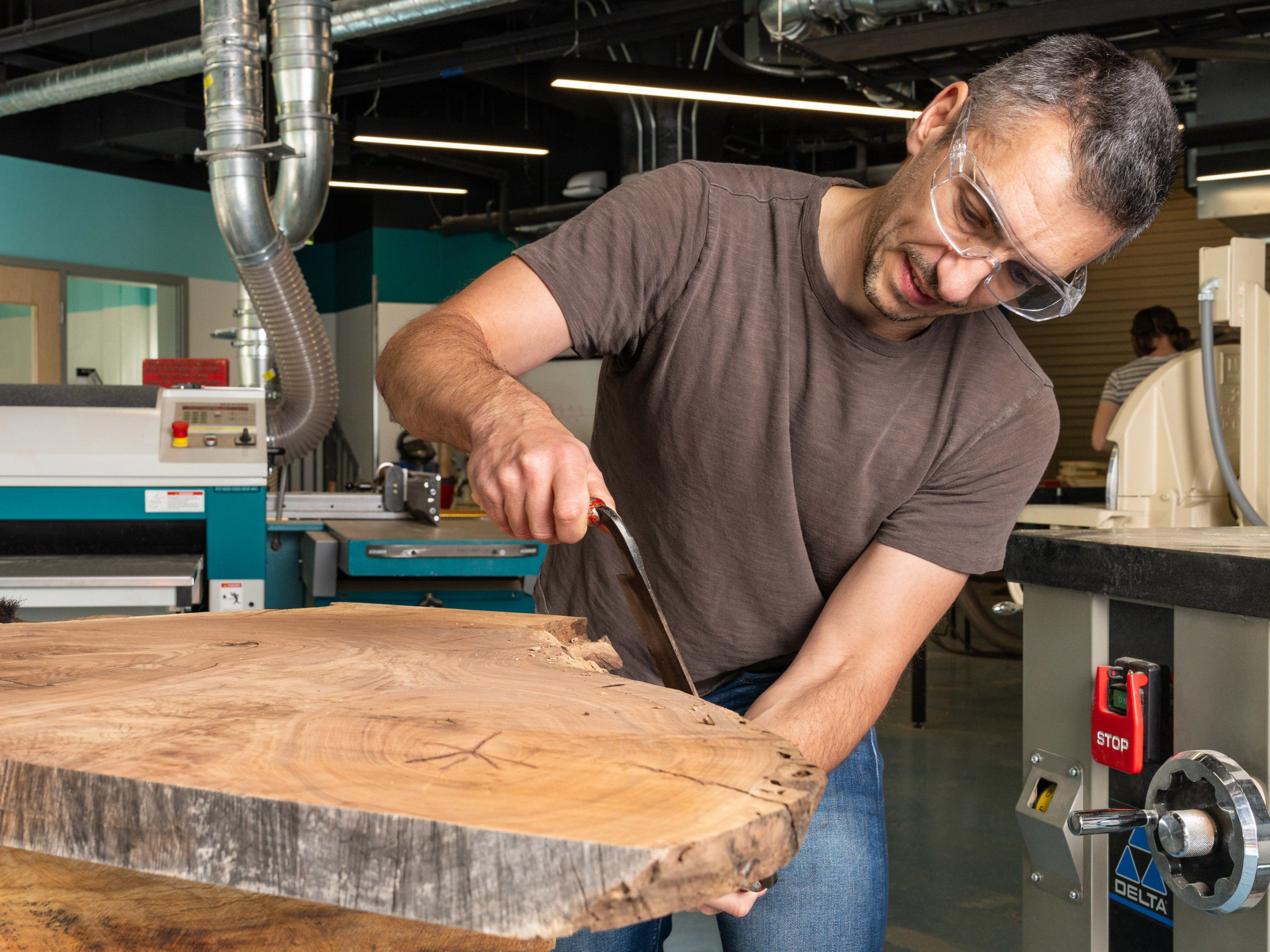
When Fine Woodworking magazine printed its first issue in the winter of 1975, a bowl made by Irving Fischman, SM ’72, PhD ’75, was on the cover. Though he had started woodworking in the MIT Hobby Shop only a few years before, he had already become highly skilled at the craft and found a lifelong passion.
“Woodworking is so fascinating that at some point in my grad school career I was thinking of doing it professionally,” says Fischman, a retired real estate developer and business consultant. “I really think working with your hands is part of human nature, and it’s so satisfying.”
Founded by students in 1938, and now used by more than 200 members of the MIT community each semester, the Hobby Shop relocated in fall 2023 when a newly renovated space—the former home of the MIT Museum store—became available in Building N51.
Intended from the start as a place for nonacademic projects, the shop continues to give many a welcome break from other work. “Because you have to concentrate on what you’re doing, you don’t think about the homework problem or the research you’re doing. You let that happen in the back of your mind,” Fischman says.
Tess Smidt ’12, an assistant professor of electrical engineering and computer science, agrees. “It’s a different way of being creative than what I do in my research, which is mostly on the computer,” she says. “It’s nice to be able to use my hands; it’s really a treat.”
The refurbished, fully equipped wood and metal shop offers membership to students, staff, faculty, alumni, and their spouses. (The only requirement for alums is new member orientation and a fee of $200 per term or $500 per year.) Members are particularly enjoying the tall windows of the new shop, which faces Massachusetts Avenue.
“It’s like night and day, literally,” Smidt says of the difference from the old space, which was in the basement of Building W31 for 65 years. “Having the sunlight and the space, you want to hang out there more.”
Much has changed over the years, Fischman says. “The original shop had a printing press and a darkroom, and people used to make their own electronics. There’s been quite a transformation, especially to the digital-controlled machine age,” he says.
The new shop is equipped with a suite of state-of-the-art machines, including a computer numerical control (CNC) router, 3D printers, a welding station, and a precision water-jet cutter. It has all the staples—planers, jointers, lathes, and hand tools—and it’s got a new, quieter air filtration system. “Incredible resources went into this shop,” Smidt says.



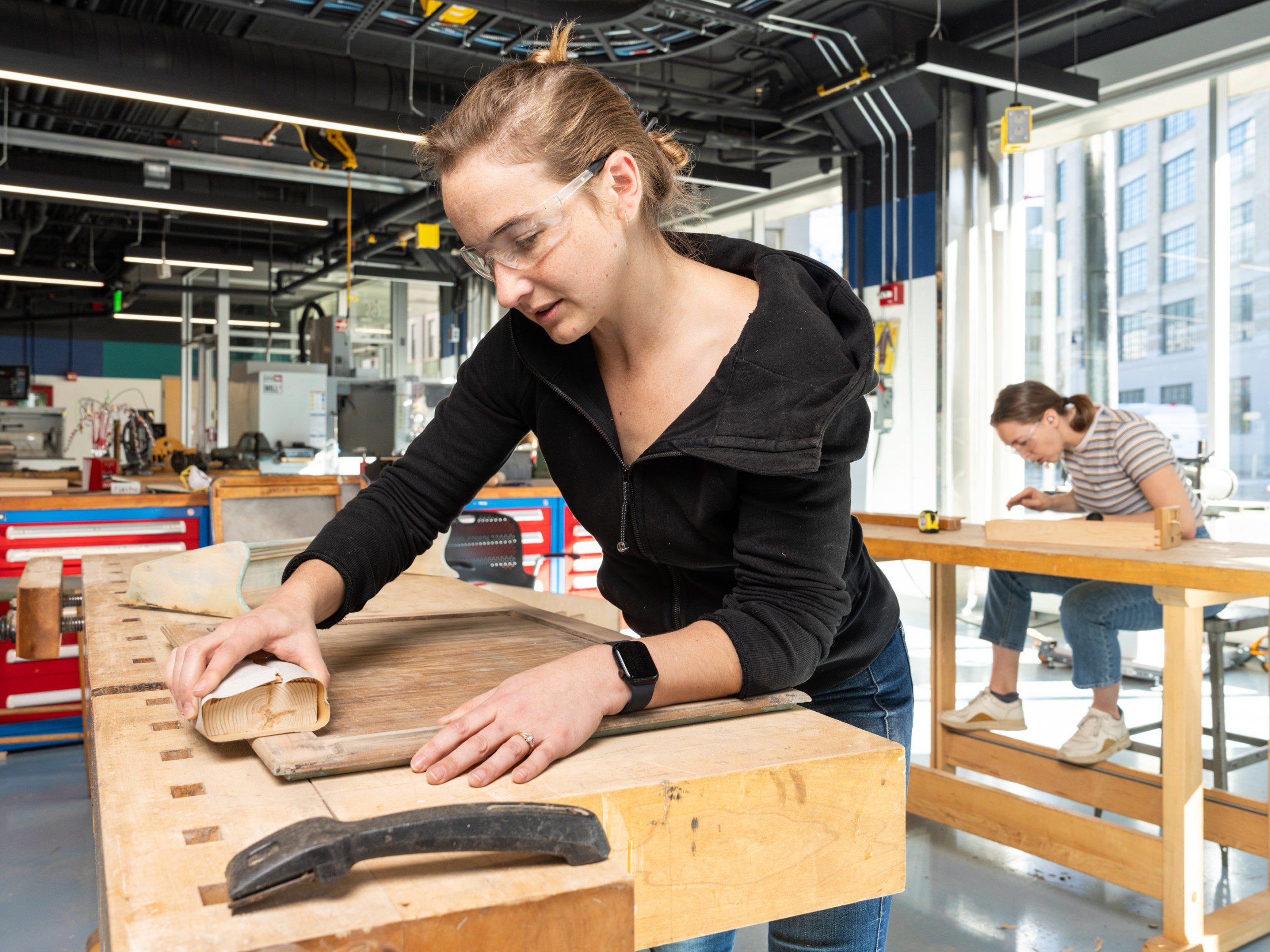


MIT faculty members Alexander Rakhlin, PhD ’06, (left) and Tess Smidt ’12 work on furniture projects in the new MIT Hobby Shop.
One of Fischman’s favorite tools is the giant belt sander, which allows him to sand a whole tabletop at one time. “You get this wonderful finish on your project,” he says. “Years ago, you’d have a little hand sander, and it would scratch the board and do all sorts of terrible things.”
Smidt says she loves the lathe but is also very fond of a small tool called a French curve scraper, which she used to sand the curves of the desk that was her ambitious first project in the shop. The piece, which Smidt calls her “noodle desk,” consists of a butcher block top that S-curves to the floor for support. It’s made of reclaimed maple from MIT’s basketball court renovation, which the shop had salvaged. “It’s always such a pleasure to use the perfect hand tool,” she says. (Find a link to photos and step-by-step instructions for building the desk here.)
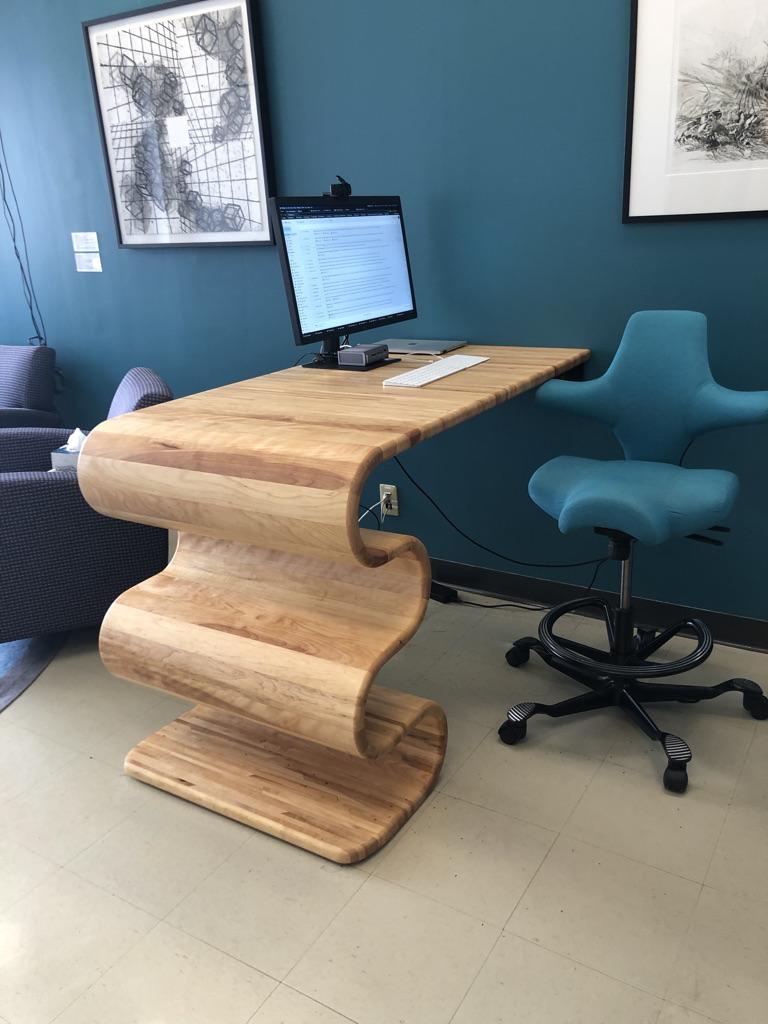


Although Smidt was an undergraduate at MIT, she didn’t discover the Hobby Shop until she joined the faculty in September 2021 (after earning her PhD from the University of California, Berkeley). “For that first year, the Hobby Shop was pretty instrumental in my maintaining sanity,” she says, noting that MIT had just begun to relax its early covid restrictions. “I think I’ve now used just about every machine.”
More than a workspace, the Hobby Shop is also a community—one where people from all corners of MIT can come together to share camaraderie as well as tips and techniques. “I’ve met some of my favorite people from MIT at the Hobby Shop,” Smidt says.
Fischman even owes his marriage to the shop. Thanks to a referral from a contact there, he wound up with a 25-year part-time gig teaching two night classes in woodworking at the Boston Center for Adult Education—where he met his wife. “That was a connection the shop made possible,” he says.
Novices are always welcome, and the shop’s staff—director Hayami Arakawa and technical instructor Coby Unger—are always willing to provide expert guidance. “It’s encouraged to ask questions,” Smidt says. Classes and workshops provide more formal training on complex machines or in unusual crafts, such as steam-bending wood.
Projects undertaken in the shop run the gamut from simple cutting boards to fine furniture. Fischman says the piece he’s most proud of is a curved-edge walnut console table with hand-planed, tapered octagonal legs. But not everyone makes furniture. “We had a guy who came in to build a machine to put the caps on his yogurt containers,” Fischman says. “We’ve had harpsichords built in the shop, canoes built in the shop. It goes on and on.”
Smidt adds, “It’s really inspiring to see what other people are making.”
Now, nearly 50 years after his bowl was spotlighted in Fine Woodworking, Fischman says he still finds joy at the Hobby Shop. “The shop is fun,” he says. “I think that’s an important aspect of it.”
Another, he says, is knowing that he has created pieces that will live on. “I’m 76. I think about legacy a bit,” he says. “The woodworking gifts that I gave to people that they cherish now are part of my legacy.”

This is today’s edition of The Download, our weekday newsletter that provides a daily dose of what’s going on in the world of technology.
Heat pumps: 10 Breakthrough Technologies 2024
We’ve entered the era of the heat pump. Heat pumps are appliances that can cool and heat spaces using electricity. Many buildings today are still heated with fossil fuels, specifically natural gas. Switching to electric heat pumps that run on renewable energy could help them to cut their emissions dramatically.
While heat pumps have been used in buildings since the mid-20th century, the technology is breaking through in a new way. New approaches are enabling them to reach higher temperatures, which could allow the technology to help clean up industrial manufacturing. However, there are still big challenges ahead. Read the full story.
—Casey Crownhart
Heat pumps are one of MIT Technology Review’s 10 Breakthrough Technologies for 2024. Check out the rest of the list and vote for the final 11th breakthrough—we’ll reveal the winner in April.
If you’re interested in heat pumps, why not check out these other pieces by Casey:
+ Everything you need to know about the wild world of heat pumps. They’re the hottest home appliance, shoved into the spotlight by the potential for cost savings and climate benefits, as well as by recent policy incentives. Read the full story.
+ The surprising truth about which homes have heat pumps. The appliances buck a common climate technology trend in the US—for now. Read the full story.
The innovation that gets an Alzheimer’s drug through the blood-brain barrier
Therapies to treat brain diseases share a common problem: they struggle to reach their target. The blood vessels that permeate the brain have a special lining so tightly packed with cells that only very tiny molecules can pass through. This blood-brain barrier acts like a seal, protecting the brain from toxins or other harmful substances. But it also keeps most medicines out.
Researchers have been working on methods to sneak drugs past the blood-brain barrier for decades. And their hard work is finally beginning to pay off. Read the full story.
—Cassandra Willyard
This story is from The Checkup, our weekly biotech newsletter. Sign up to receive it in your inbox every Thursday.
The must-reads
I’ve combed the internet to find you today’s most fun/important/scary/fascinating stories about technology.
1 Microsoft briefly usurped Apple as the world’s most valuable company
The AI boom has investors laughing all the way to the bank. (FT $)
+ Microsoft is growing more quickly than its old rival. (Reuters)+ But Apple quickly regained its position—for now. (WSJ $)
2 The unlucky Peregrine moon lander is still collecting data
It didn’t make it to the moon, but that doesn’t mean it isn’t making itself useful. (The Verge)
3 US school shooter plans have been leaked online
The highly sensitive emergency documents were exposed in a database leak. (Wired $)
4 China’s cheap electric cars has the West rattled
They’re fast, they look good—and most importantly, they’re cheap. (Economist $)
+ Rental firm Hertz is selling off 20,000 EVs due to low demand. (Bloomberg $)
+ Europe’s best-selling Chinese EV maker has a surprising name. (MIT Technology Review)
5 Duolingo is firing human translators in favor of AI
A former worker says errors are creeping into language courses as a result. (WP $)
+ Chatbots, chatbots, everywhere. (Vox)
+ This company is building AI for African languages. (MIT Technology Review)
6 eBay has been fined for harassing a Massachusetts couple
The pair ran a newsletter for online merchants that rubbed eBay executives up the wrong way.(The Guardian)
7 Even the blockchain is pivoting to AI
But whether the two technologies can really solve each other’s problems remains to be seen. (WSJ $)
8 Smart locks are a technical nightmare 


I just want to get into my apartment! (NY Mag $)
9 The first text messages sent via Starlink satellite have been delivered
Referencing a decade-old meme, naturally. (Ars Technica)
10 The barcode is slowly dying
But its most probable replacement is already looking outdated. (The Atlantic $)
Quote of the day
“I’ve seen better acting by hostages in direct to DVD movies.”
—An anonymous WebMD employee reacts to a cringe-inducing video the company’s parent firm made demanding employees return to the office, Motherboard reports.
The big story
The Atlantic’s vital currents could collapse. Scientists are racing to understand the dangers.



December 2021
Scientists are searching for clues about one of the most important forces in the planet’s climate system: a network of ocean currents known as the Atlantic Meridional Overturning Circulation. They want to better understand how global warming is changing it, and how much more it could shift, or even collapse.
The problem is the Atlantic circulation seems to be weakening, transporting less water and heat. Because of climate change, melting ice sheets are pouring fresh water into the ocean at the higher latitudes, and the surface waters are retaining more of their heat. Warmer and fresher waters are less dense and thus not as prone to sink, which may be undermining one of the currents’ core driving forces. Read the full story.
—James Temple
We can still have nice things
A place for comfort, fun and distraction in these weird times. (Got any ideas? Drop me a line or tweet ’em at me.)
+ There’s nothing Italians love more than imposing a food rule.
+ Maybe we should all move to Vienna.
+ These easy sheet pan recipes look both delicious and nutritious.
+ To capture birds in flight, you really have to put in the hours.
+ Is Amaro the drink of 2024 (already?)